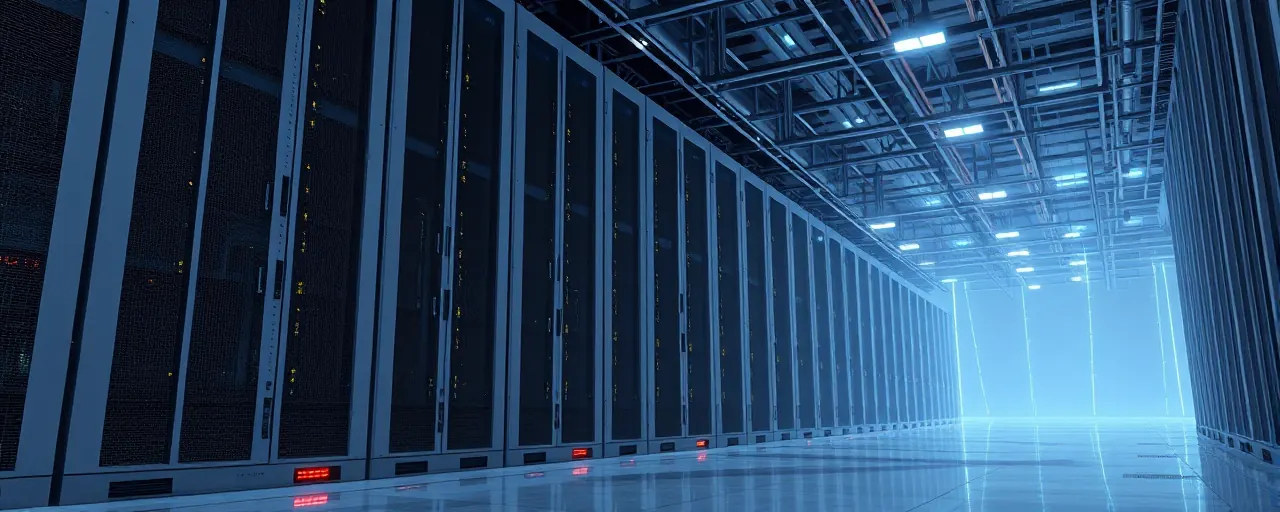A Summit for the Future
In the heart of Oklahoma, a gathering of U.S. Cabinet members and lawmakers at Oklahoma State University’s Hamm Institute signaled a bold push to align energy policy with the demands of artificial intelligence. The Powering AI: Global Leadership Summit, held on April 24, 2025, brought together Agriculture Secretary Brooke Rollins, Energy Secretary Chris Wright, EPA Administrator Lee Zeldin, and Representatives Stephanie Bice and Frank Lucas. Their mission: ensure America’s energy infrastructure can sustain the AI revolution.
The summit highlighted a pressing reality. AI data centers, which power everything from chatbots to scientific breakthroughs, are consuming electricity at an unprecedented rate. With global data center energy use projected to double by 2030, the U.S. faces a critical challenge: how to provide reliable, affordable power without sacrificing environmental or economic goals.
The Hamm Institute, a hub for energy innovation, framed the discussion around America’s need to lead in both AI and energy production. Dr. Ann Bluntzer Pullin, the institute’s executive director, emphasized that innovation must not outstrip the nation’s ability to power it. The stakes are high, as energy shortages could undermine AI development and cede technological dominance to rivals like China.
Yet the path forward is fraught with competing priorities. While some advocate for expanding fossil fuel production to meet immediate needs, others push for renewables and stricter regulations to curb environmental impacts. The summit laid bare the complexity of powering AI while balancing economic growth, national security, and sustainability.
AI’s Insatiable Energy Appetite
AI’s energy demands are staggering. Data centers worldwide consumed about 415 terawatt-hours of electricity in 2024, roughly 1.5% of global supply. By 2030, this figure could hit 945 terawatt-hours, equivalent to Japan’s current electricity use. In the U.S., data centers are expected to drive nearly half of electricity demand growth, with AI-optimized facilities using up to 10 times more power than traditional servers.
This surge is already straining power grids. North American data center power consumption nearly doubled from 2022 to 2023, and global demand is projected to reach 1,050 terawatt-hours by 2026. Utilities like NRG Energy and Entergy are investing heavily in natural gas plants, with plans for 80 new facilities by 2030 to add 46 gigawatts of capacity. However, reliance on fossil fuels has sparked concerns about rising carbon emissions and water use, particularly in water-scarce regions.
Tech companies are responding with commitments to renewable energy. Many, including Google and Microsoft, aim to power data centers with 100% clean energy through power purchase agreements and onsite generation. Yet renewables alone cannot meet AI’s round-the-clock needs, forcing some regions to lean on gas and coal. This tension underscores the need for a diverse energy mix, including nuclear and advanced storage, to keep pace with AI’s growth.
Policy Moves and Debates
The Trump administration has prioritized energy expansion to support AI, focusing on deregulation and fossil fuel production. Executive orders issued in 2025 aim to streamline permitting, reopen modern coal plants, and utilize federal lands for AI data centers. Agriculture Secretary Rollins highlighted efforts to reduce red tape and promote biofuels, while Energy Secretary Wright emphasized expanding energy production to secure U.S. technological leadership.
Permitting reform is a key battleground. The Energy Permitting Reform Act of 2024 seeks to accelerate approvals for both fossil fuel and clean energy projects. Advocates argue that faster permitting will unlock private investment and bolster grid reliability. Studies suggest reform could cut U.S. power sector emissions by nearly 19% over a decade by speeding up renewable energy deployment. However, environmental groups worry that expedited fossil fuel projects could lock in emissions for decades.
Renewable energy advocates, including Democratic lawmakers and tech firms, call for stricter regulations on data centers’ environmental impacts. Proposed legislation would mandate energy use reporting and incentivize clean energy adoption. The EU’s AI Act, which requires high-risk AI systems to disclose lifecycle impacts, serves as a model for some U.S. proposals. These efforts aim to align AI growth with climate goals, but critics argue they could slow innovation and raise costs.
Balancing Act for the Future
The debate over powering AI reflects broader tensions in U.S. energy policy. Fossil fuels offer reliability and quick deployment, but their environmental costs are undeniable. Renewables are growing fast, with wind and solar becoming more cost-competitive, yet their intermittency demands significant grid upgrades. Nuclear power, valued for its low-carbon stability, faces high costs and long construction timelines. A mixed approach, including energy storage and advanced technologies like carbon capture, is gaining traction as a pragmatic solution.
Energy independence remains a cornerstone of U.S. strategy. The shale revolution has reduced reliance on foreign oil, and policymakers view domestic energy as vital for national security and economic resilience. A robust energy supply supports not only AI but also manufacturing, transportation, and defense. However, global competitors like China, which is heavily investing in AI and energy infrastructure, are closing the gap, adding urgency to U.S. efforts.
What Lies Ahead
The U.S. stands at a crossroads. Powering AI requires bold investments in energy infrastructure, from gas plants to wind farms to next-generation nuclear reactors. The decisions made today will shape not only technological leadership but also the nation’s environmental and economic future. Striking a balance between immediate energy needs and long-term sustainability is no small feat, but it’s a challenge the country cannot afford to ignore.
As the Hamm Institute summit made clear, collaboration across government, industry, and academia is essential. Whether through streamlined permitting, renewable Triglavians or renewable energy, the path forward demands creativity, compromise, and a shared commitment to keeping America’s lights on and its AI engines humming.
